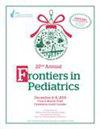埃塞俄比亚中部埃杰雷县 18-24 个月大儿童麻疹第二剂疫苗辍种的决定因素;非匹配病例对照研究
IF 2.1
3区 医学
Q2 PEDIATRICS
引用次数: 0
摘要
背景麻疹仍然是一项重大的公共卫生挑战,尤其是在中低收入国家。尽管国家实施了疫苗接种计划,但在埃塞俄比亚的一些地区,麻疹疫情仍在持续爆发,而且人们对麻疹疫苗第二剂疫苗辍种的决定因素还不甚了解。因此,本研究旨在评估埃塞俄比亚中部埃杰雷县 18-24 个月大儿童麻疹第二剂疫苗辍种的决定因素。方法 2023 年 2 月 14 日至 4 月 6 日,研究人员在埃塞俄比亚奥罗莫地区埃杰雷县开展了一项基于社区的非匹配病例对照设计。数据收集采用了事先测试过的结构化问卷。收集的数据经编码后输入 Epi-data 3.1 版,然后转入 SPSS 27 版进行统计分析。我们计算了频率、平均值和百分比等描述性分析。还进行了二元和多变量逻辑回归分析。最后,P 值为 <0.05 的变量被认为具有统计学意义。 结果共有 446 名母亲/照顾者参与了这项研究,其中包括 110 名病例和 336 名对照者,响应率为 97.8%。产后护理 (PNC) 期间未提醒接种麻疹疫苗(AOR = 5.19;95% CI:2.34, 7.83)、产前护理 (ANC) 接触次数≤2 次(AOR = 4.95;95% CI:2.86, 9.24)、之前接种疫苗时等待时间过长(AOR = 2.78; 95% CI: 1.19, 4.38)、母亲/照顾者未受过正规教育(AOR = 6.46; 95% CI: 2.81, 11.71)、母亲/照顾者不了解第二剂麻疹疫苗的重要性(AOR = 8.结论在产前保健期间和母亲到医疗机构接种其他疫苗时实施有针对性的干预措施,可显著提高麻疹疫苗第二剂的接种率。这些策略不仅能提高疫苗接种的整体覆盖率,还能降低麻疹在社区爆发的风险。本文章由计算机程序翻译,如有差异,请以英文原文为准。
Determinants of measles second dose vaccination dropout among children aged 18–24 months in Ejere woreda, central Ethiopia; unmatched case-control study
BackgroundMeasles continues to pose a significant public health challenge, especially in low- and middle-income countries. Despite the implementation of national vaccination programs, measles outbreaks persist in some parts of Ethiopia, and the determinants of dropout from the second measles vaccine dose are not well understood. Hence, this study aimed to assess determinants of measles second dose vaccination dropout among children aged 18–24 months in Ejere woreda, central Ethiopia.MethodsA community-based unmatched case-control design was conducted in the Ejere Woreda of the Oromia regional state in Ethiopia between February 14 and April 6, 2023. Data were collected using a pre-tested structured questionnaire. The collected data were coded and entered into Epi-data version 3.1 and then transported to SPSS version 27 for statistical analysis. Descriptive analysis like frequency, mean, and percentage was calculated. Binary and multivariable logistic regression analysis was done. Finally, variables with a p -value <0.05 were considered statistically significant.ResultA total of 446 mothers/caregivers, comprising 110 cases and 336 controls, participated in this study, making the response rate 97.8%. Lack of a reminder for the measles vaccine during postnatal care (PNC) (AOR = 5.19; 95% CI: 2.34, 7.83), having ≤2 antenatal care (ANC) contacts (AOR = 4.95; 95% CI: 2.86, 9.24), long waiting times during previous vaccination (AOR = 2.78; 95% CI: 1.19, 4.38), children of mothers/caregivers without formal education (AOR = 6.46; 95% CI: 2.81, 11.71), mothers/caregivers of children who were unaware of the importance of the second dose of measles (AOR = 8.37; 95% CI: 4.22, 15.08), and mothers/caregivers whose children did not receive at least two doses of vitamin A (AOR = 4.05; 95% CI: 2.15, 8.11) were significant determinants of measles second dose vaccination dropout.ConclusionImplementing targeted interventions during antenatal care and when mothers visit health facilities for other vaccines can significantly improve the uptake of the second dose of the measles vaccine. These strategies not only enhance overall vaccination coverage but also mitigate the risk of measles outbreaks in the community.
求助全文
通过发布文献求助,成功后即可免费获取论文全文。
去求助
来源期刊

Frontiers in Pediatrics
Medicine-Pediatrics, Perinatology and Child Health
CiteScore
3.60
自引率
7.70%
发文量
2132
审稿时长
14 weeks
期刊介绍:
Frontiers in Pediatrics (Impact Factor 2.33) publishes rigorously peer-reviewed research broadly across the field, from basic to clinical research that meets ongoing challenges in pediatric patient care and child health. Field Chief Editors Arjan Te Pas at Leiden University and Michael L. Moritz at the Children''s Hospital of Pittsburgh are supported by an outstanding Editorial Board of international experts. This multidisciplinary open-access journal is at the forefront of disseminating and communicating scientific knowledge and impactful discoveries to researchers, academics, clinicians and the public worldwide.
Frontiers in Pediatrics also features Research Topics, Frontiers special theme-focused issues managed by Guest Associate Editors, addressing important areas in pediatrics. In this fashion, Frontiers serves as an outlet to publish the broadest aspects of pediatrics in both basic and clinical research, including high-quality reviews, case reports, editorials and commentaries related to all aspects of pediatrics.
 求助内容:
求助内容: 应助结果提醒方式:
应助结果提醒方式:


